Animals traded for traditional medicine in Ghana: their zootherapeutic uses and implications for biodiversity conservation
- PMID: 40122832
- PMCID: PMC11931777
- DOI: 10.1186/s13002-024-00717-5
Animals traded for traditional medicine in Ghana: their zootherapeutic uses and implications for biodiversity conservation
Abstract
The use of animals for zootherapeutic purposes has been reported worldwide, and with the patronage of complementary and alternative medicines being on the ascendency, the trade and use of animal parts will only escalate. Many more of these animals used in traditional medicine will be pushed to extinction if policies for their sustainable use and conservation are not formulated. There have been studies across the world which assessed the trade and use of animals in traditional medicine including Ghana. However, all previous Ghanaian studies were conducted in a few specific cities. It therefore makes it imperative for a nationwide study which would provide more comprehensive information on the trade and use of animals in traditional medicine and its conservation implications. Using direct observation and semi-structured questionnaires, data were collected from 133 vendors of animal parts used in traditional medicines in 48 markets located across all 16 administrative regions of Ghana. Analysis of the data showed that the trade in wild animal parts for traditional medicine was more prevalent in the urban centres of Ghana. Overall, 75 identifiable animal species were traded on Ghanaian traditional medicine markets. Using their relative frequency of citation values, chameleons (Chamaeleo spp.; 0.81), lions (Panthera leo; 0.81) and the West African crocodile (Crocodylus suchus; 0.67) were the most commonly traded animals in Ghana. Majority of the vendors (59.1%) indicated that their clients use the animal parts for medicinal purposes mainly for skin diseases, epilepsy and fractures, while clients of 28.2% of the vendors use the animal parts for spiritual or mystical purposes, such as protection against spiritual attacks, spiritual healing and money rituals. Up to 54.2% of the animals were classified as Least Concern by IUCN, 14.7% were threatened, with 51.2% of CITES-listed ones experiencing a decreasing population trend. This study also found that 68.5% of the traded animal species are not listed on CITES, but among those listed, 69.6% are classified under Appendix II. Considering the level of representation of animals of conservation concerns, the harvesting and trade of animal parts for traditional medicine must be regulated. This call is even more urgent since 40.0% of the top ten traded animals are mammals; a class of animals with long gestation periods and are not prolific breeders.
Keywords: Chameleon; Ecozones; Medicine; Mystical; Phyla; Trade; Zootherapy.
© 2025. The Author(s).
Conflict of interest statement
Declarations. Ethical approval: Ethical clearance with certificate number ECBAS 011/20–21 was provided by the Ethics Committee for Basic and Applied Science of the University of Ghana. Consent for publication: Not applicable. Competing interests: The authors declare no competing interests.
Figures

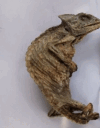
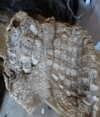


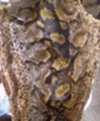

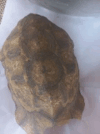
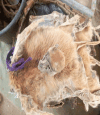



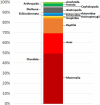
Similar articles
-
Gaps in global wildlife trade monitoring leave amphibians vulnerable.Elife. 2021 Aug 12;10:e70086. doi: 10.7554/eLife.70086. Elife. 2021. PMID: 34382939 Free PMC article.
-
Medicinal plants trade in Harare's urban markets: diversity, conservation status, and economic significance.J Ethnobiol Ethnomed. 2025 Apr 24;21(1):28. doi: 10.1186/s13002-025-00778-0. J Ethnobiol Ethnomed. 2025. PMID: 40275311 Free PMC article.
-
Utilisation of Pangolin (Manis sps) in traditional Yorubic medicine in Ijebu province, Ogun State, Nigeria.J Ethnobiol Ethnomed. 2009 Dec 4;5:39. doi: 10.1186/1746-4269-5-39. J Ethnobiol Ethnomed. 2009. PMID: 19961597 Free PMC article.
-
Medicinal animals as therapeutic alternative in a semi-arid region of northeastern Brazil.Forsch Komplementmed. 2009 Oct;16(5):305-12. doi: 10.1159/000235855. Epub 2009 Sep 10. Forsch Komplementmed. 2009. PMID: 19887809 Review.
-
Global trade in exotic pets 2006-2012.Conserv Biol. 2014 Jun;28(3):663-76. doi: 10.1111/cobi.12240. Epub 2014 Mar 24. Conserv Biol. 2014. PMID: 24661260 Review.
References
-
- Adeola MO. Importance of wild animals and their parts in the culture, religious festivals, and traditional medicine, of Nigeria. Environ Conserv. 1992;19(2):125–34.
-
- Ajagun EJ, Anyaku CE, Afolayan MP. A survey of the traditional medical and non-medical uses of animals species and parts of the indigenous People of Ogbomoso. Oyo State Int J Herbal Med. 2007;5(3):26–32.
-
- Alade GO, Frank A, Ajibesin KK. Animals and animal products as medicines: a survey of Epie-Atissa and Ogbia people of Bayelsa State, Nigeria. J Pharm Pharmacogn Res. 2018;6:483–502.
-
- Aldridge, C. Materials used to make African drums (2023). https://www.ehow.co.uk/list_6621778_materials-used-make-african-drums.html
-
- Alonso-Castro AJ, Carranza-Álvarez C, Maldonado-Miranda JJ, del Rosario Jacobo-Salcedo M, Quezada-Rivera DA, Lorenzo-Márquez H, Medellín-Milán P. Zootherapeutic practices in Aquismón, San Luis Potosí, México. J Ethnopharmacol. 2011;138(1):233–7. - PubMed
MeSH terms
LinkOut - more resources
Full Text Sources
Miscellaneous

